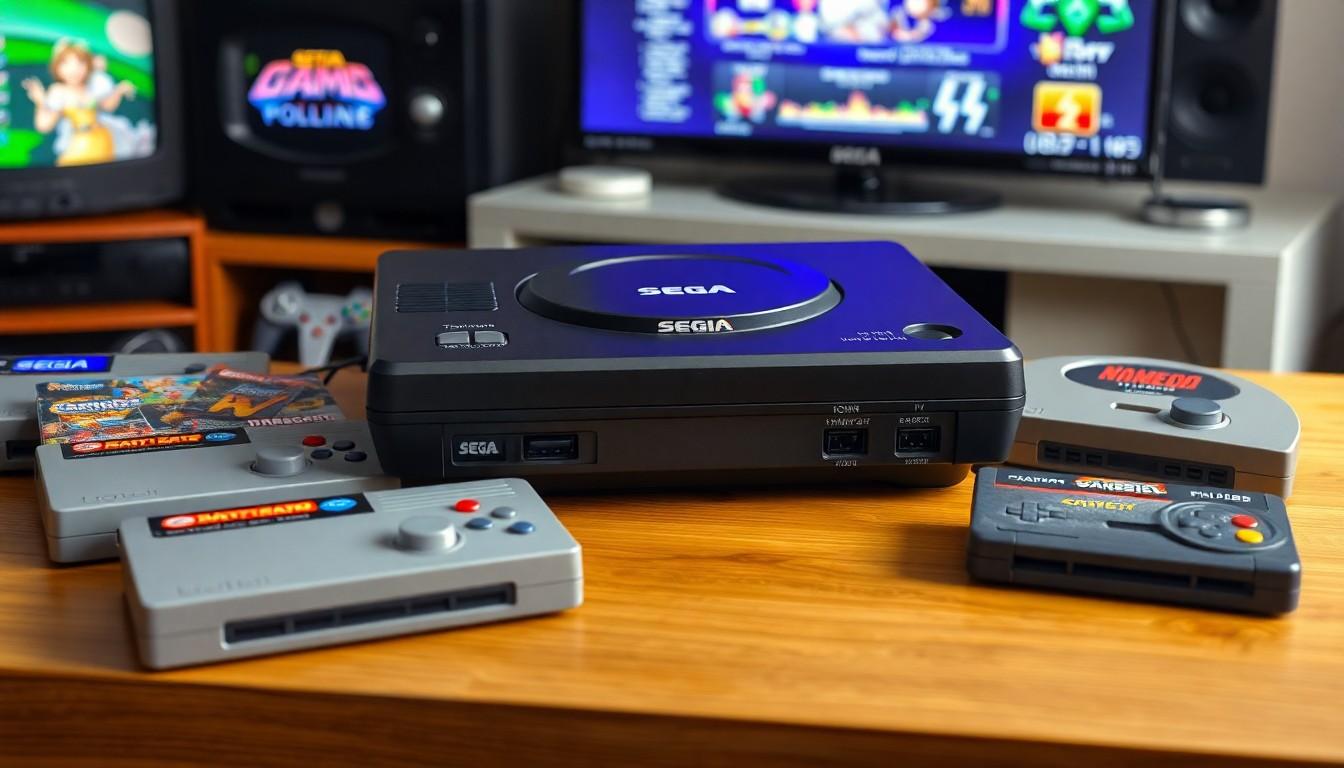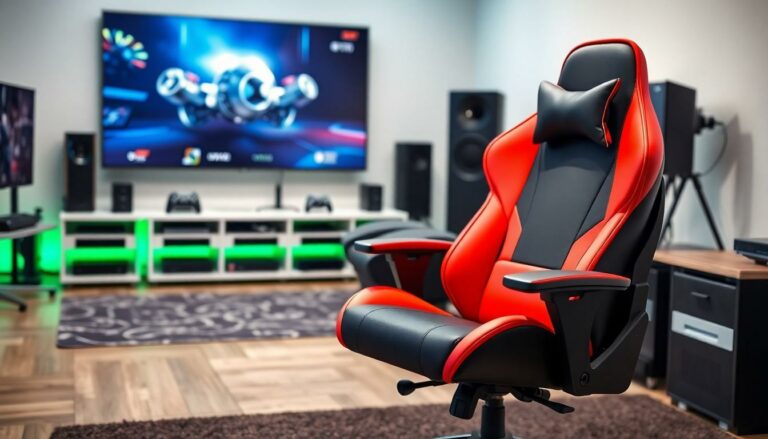In the world of gaming, few names evoke nostalgia quite like Sega. This legendary console maker took the gaming scene by storm in the ’80s and ’90s, captivating players with unforgettable titles and innovative technology. From the iconic Sonic the Hedgehog to the thrilling streets of Streets of Rage, Sega’s games have left an indelible mark on the hearts of millions.
But let’s be honest—who wouldn’t want to relive those pixelated adventures? The Sega gaming console isn’t just a relic of the past; it’s a time machine that transports players back to simpler days of button-mashing glory. Whether you’re a seasoned gamer or a curious newcomer, diving into the Sega universe promises a wild ride filled with laughter and excitement. So grab your controller, dust off that old cartridge, and get ready to explore the magic of Sega gaming.
Sega Gaming Console
Sega gaming consoles defined a generation of gaming culture. The Sega Master System launched in 1985, introduced advanced graphics and sound for its time. Later, the Sega Genesis, released in 1989, solidified Sega’s reputation with iconic titles such as Sonic the Hedgehog and Mortal Kombat. The Sega Saturn followed in 1994, emphasizing 3D graphics amid rising competition.
Innovations in the gaming industry often originated from Sega. For instance, the introduction of the 16-bit technology with the Genesis set it apart from rivals. The Sega Dreamcast, released in 1998, pioneered online gaming features, making it a significant milestone in console history.
Retro gaming enthusiasts cherish these consoles. They provided diverse gaming experiences through genres like platformers, shooters, and fighting games. Classic titles like Phantasy Star and Streets of Rage still evoke nostalgia for many players.
Sega also embraced creativity with its hardware designs. Each console featured unique characteristics that appealed to different audiences. Collectors often seek limited editions and accessories that enhance the gaming experience.
The legacy of Sega remains strong today. Modern re-releases and mini console versions allow new players to experience classic titles. By reconnecting with Sega, both seasoned gamers and newcomers gain access to a rich history of gaming. Engaging with Sega’s extensive library can lead to hours of enjoyment and exploration of video game milestones.
History Of Sega Gaming Console

Sega’s legacy began with a commitment to innovation, starting in the early years of gaming. This company transformed the entertainment landscape and captivated a generation of players.
Early Beginnings
Sega entered the gaming market in 1983 with the Sega SG-1000. Featuring newly developed hardware, this console set the stage for Sega’s future endeavors. It captured attention with a solid library of early titles, including “Champion Golf” and “Zaxxon.” The release of the Sega Master System in 1985 marked a significant leap, introducing superior graphics and sound. Gamers embraced classics like “Sonic the Hedgehog,” which launched alongside the Sega Genesis in 1989, further establishing Sega’s prominence in the industry.
Evolution Through The Years
The Sega Genesis revolutionized gaming with its 16-bit technology, attracting a devoted fanbase. Numerous iconic titles emerged during this era, solidifying Sega’s reputation. In 1994, the Sega Saturn arrived, emphasizing advanced 3D graphics and immersive gameplay experiences. Despite its initial struggles, the Saturn showcased Sega’s commitment to innovation. The introduction of the Sega Dreamcast in 1998 brought online gaming capabilities. Games like “Jet Set Radio” and “Shenmue” pushed the boundaries of storytelling in gaming. Throughout the years, Sega continuously adapted to industry trends while maintaining its distinctive creative flair.
Features And Specifications
Sega consoles showcase significant features and specifications that defined gaming experiences across generations. Each model introduced unique innovations that enhanced gameplay and engagement.
Hardware Innovations
Sega’s hardware innovations set new standards in gaming technology. The Sega Genesis introduced a 16-bit processor, delivering smoother graphics and richer sound than its competitors. Advances continued with the Sega Saturn’s dual-processor architecture, enabling complex 3D graphics for immersive gameplay. The Sega Dreamcast pushed boundaries further with its 128-bit technology, which supported online gaming experiences and real-time graphics. Each generation reflected Sega’s commitment to elevating player experiences through cutting-edge engineering, making each console a memorable part of gaming history.
Notable Accessories
Sega offered notable accessories that expanded gameplay options and enhanced user interaction. The Sega Genesis had the Sega CD attachment, allowing for enhanced audio and full-motion video in games. Another popular accessory was the 32X, which provided additional processing capabilities for improved graphics and gameplay depth. Beyond this, the Sega Saturn featured the NetLink modem, enabling online play and connecting gamers. The Dreamcast introduced the Visual Memory Unit, integrating memory storage with interactive features like mini-games. These accessories complemented the consoles, enriching the overall gaming ecosystem and user experience.
Popular Sega Gaming Console Models
Sega has delivered several iconic gaming consoles, each leaving a unique mark on the gaming landscape.
Sega Genesis
The Sega Genesis, launched in 1989, is renowned for its 16-bit processing capabilities. Advanced graphics and a rich audio experience set it apart from competitors. Iconic titles such as Sonic the Hedgehog and Mortal Kombat captivated gamers. Its extensive library contributed to its success, with over 1,000 game titles. Accessories, including the Sega CD and 32X, expanded gameplay options. Gamers still cherish the Genesis for its impact on the industry and its role in defining home console gaming.
Sega Saturn
Released in 1994, the Sega Saturn emphasized 3D graphics with its dual-processor architecture. Complex visuals helped it stand out during a time of transition in gaming. Despite facing stiff competition, memorable titles like Nights into Dreams and Virtua Fighter showcased its capabilities. Innovative accessories, such as the NetLink modem, allowed for online interactions. The Saturn’s legacy lies in its contributions to 3D game design, influencing future generations of gaming hardware.
Sega Dreamcast
Launched in 1998, the Sega Dreamcast marked a pivotal moment in gaming history. It featured 128-bit technology, enabling stunning graphics and compelling gameplay experiences. Online gaming options gave players access to competitive multiplayer environments. With classics like Shenmue and Jet Set Radio, the Dreamcast built a dedicated fanbase. Unique accessories like the Visual Memory Unit enhanced functionality and interactivity. This console remains beloved for its pioneering efforts and innovative features, despite its short lifespan.
Impact On Gaming Industry
Sega’s impact on the gaming industry reshaped both game design and player expectations.
Contributions To Game Development
Innovative titles like Sonic the Hedgehog showcased the potential of fast-paced platforming. The introduction of 16-bit technology in Sega Genesis enhanced graphics, allowing developers to create more visually engaging worlds. Advanced hardware capabilities in the Sega Saturn encouraged developers to explore 3D environments with games like Virtua Fighter. Pioneering online features in the Dreamcast expanded multiplayer possibilities, shaping how players connect and compete. The wide range of genres Sega supported created opportunities for diverse storytelling, influencing game development practices for decades.
Legacy And Influence
Sega consoles left an indelible mark on gaming culture. The rich library of titles established enduring franchises, introducing characters that remain popular today. Many developers cite Sega as a significant influence in their careers, noting how groundbreaking games inspired their creative journeys. Nostalgic appeal prompted the revival of classic games, seen in re-releases and mini console versions. Sega’s commitment to innovation cultivated a lasting legacy, helping define the gaming landscape and pushing competitors to strive for advancement.
Pivotal Chapter in Gaming Industry
Sega’s legacy in the gaming world remains undeniable. Its innovative consoles and iconic titles have shaped the experiences of countless gamers over the decades. The nostalgia associated with Sega consoles continues to resonate with both old fans and new players discovering these classics for the first time.
As they revisit beloved games or explore the rich history of Sega, players can appreciate the creativity and technological advancements that defined each generation. Sega not only influenced the gaming industry but also created lasting memories that continue to inspire. Embracing the magic of Sega is more than just playing games; it’s about celebrating a pivotal chapter in gaming history.




